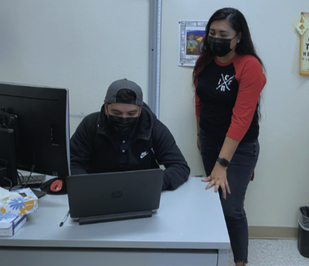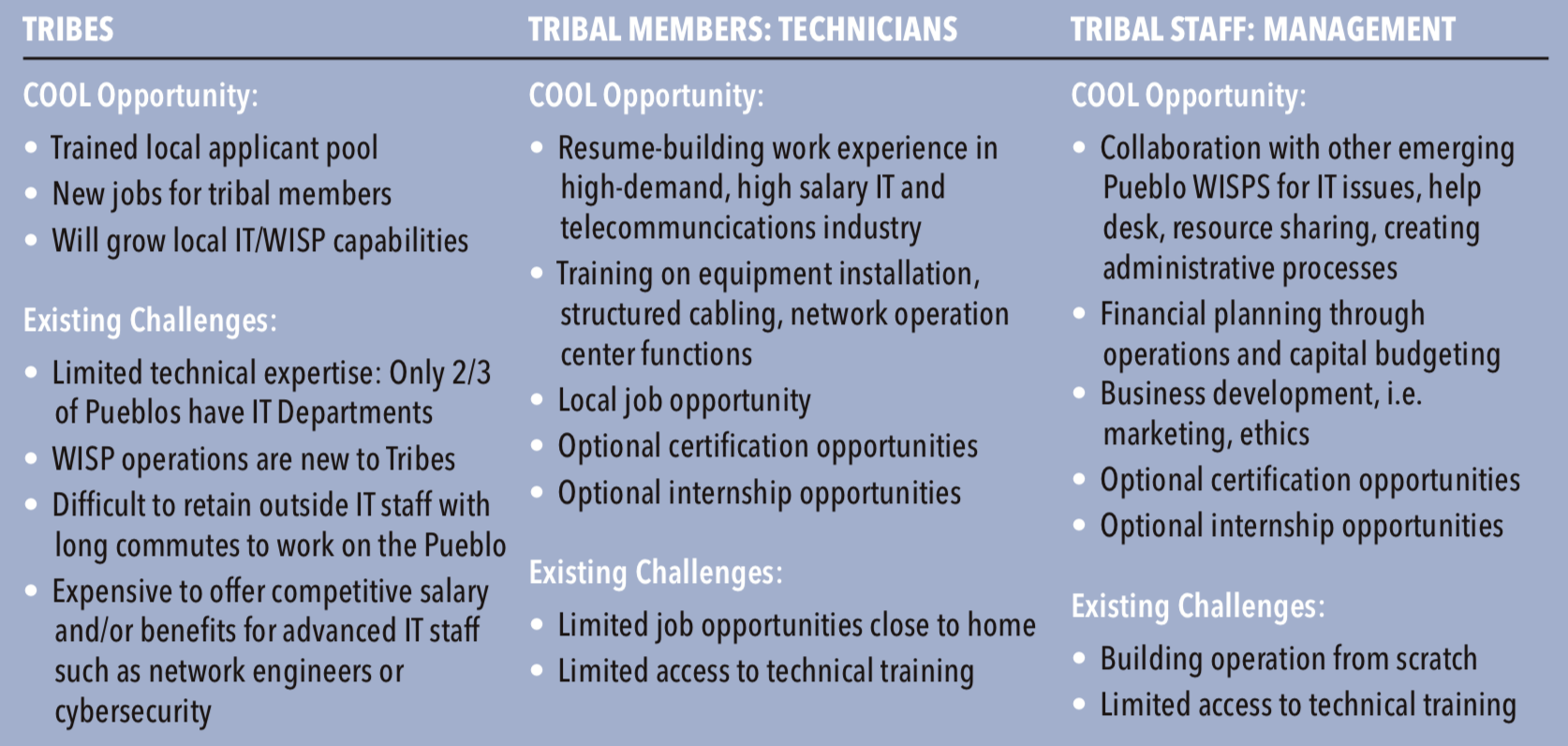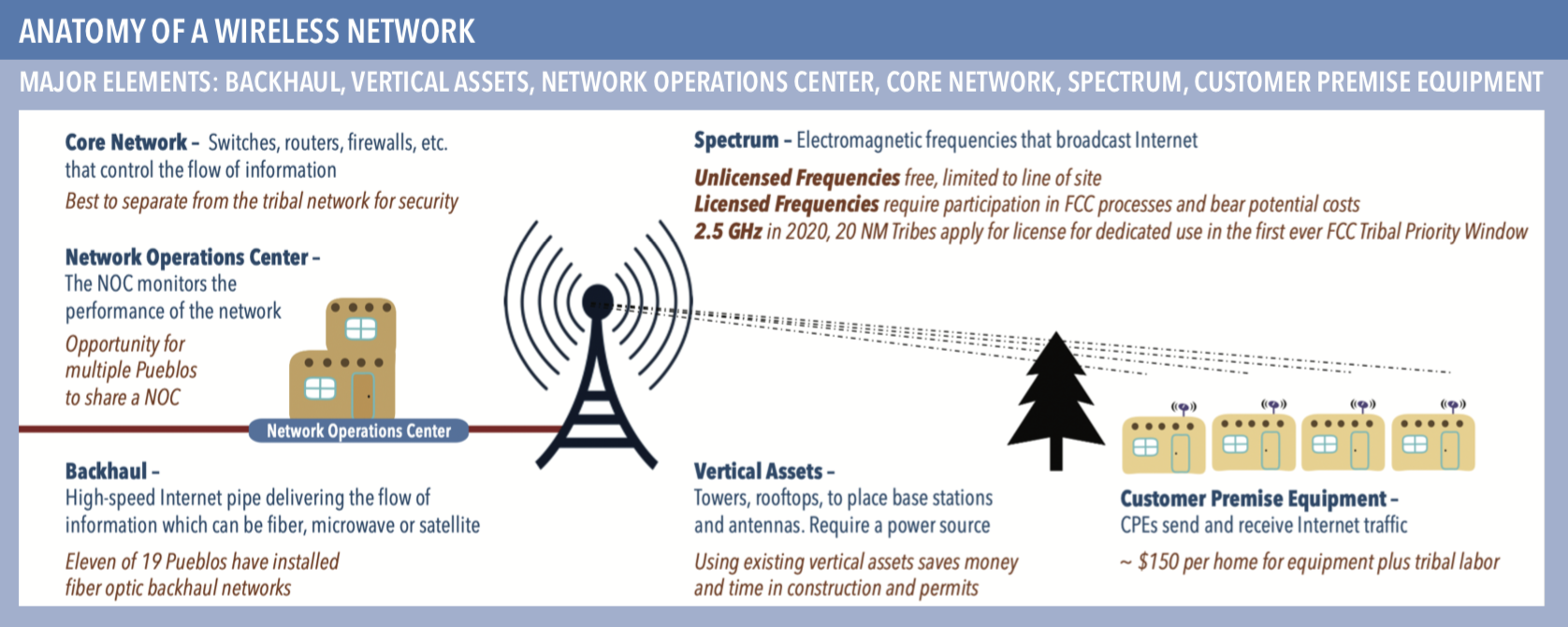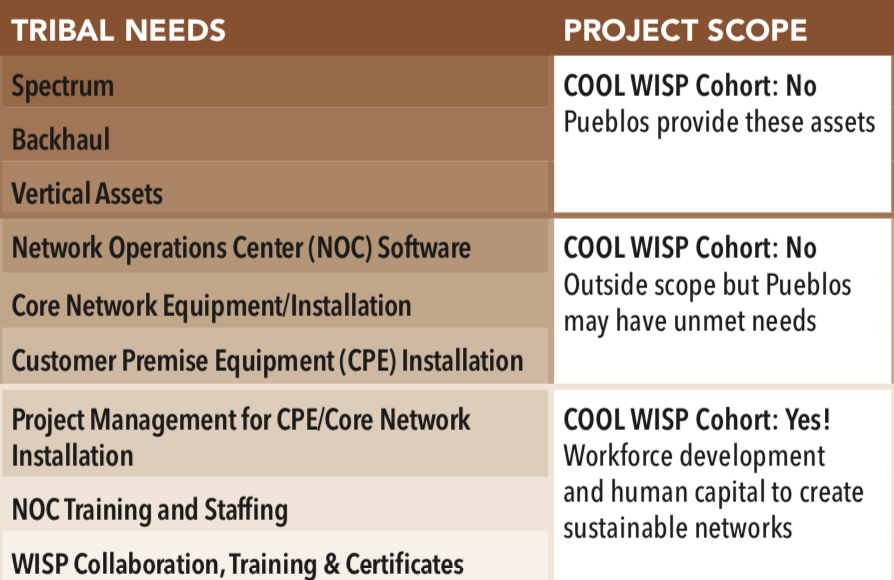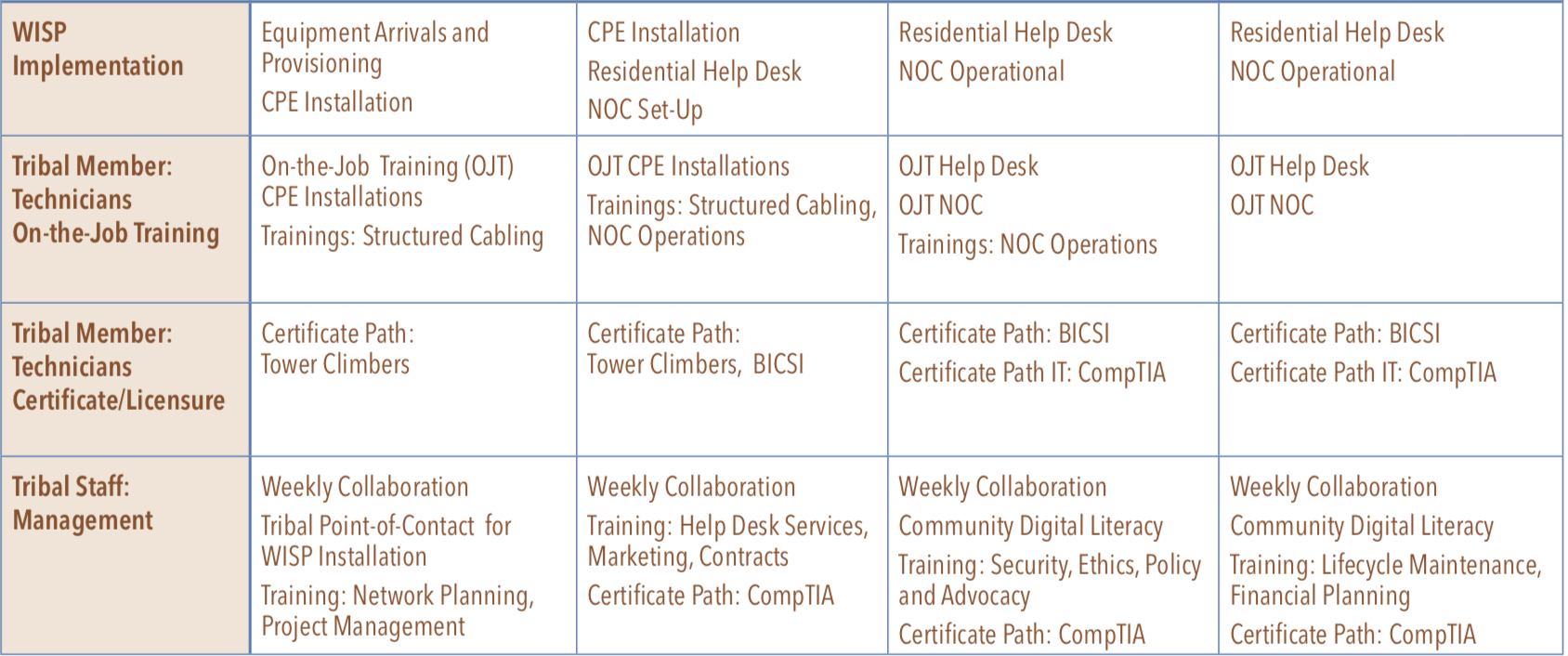|
COVID-19 has revealed the dire consequences for those living on the wrong side of the digital divide. Access to affordable high-speed Inter- net access in tribal homes is a critical lifeline for the health, safety, and education of families. However, due to the lack of affordable residential Internet offerings, tribal members are too often unconnected. In a recent SFIS survey, 45% of students do not have residential home Inter- net and rely on the poor coverage, limited data, and expensive, often pre-paid, cellular plans. As of May 11, 2020, Native Americans made up 57% of COVID-19 New Mexico cases while representing only 11% of the NM population. In response, the Pueblo Governors closed the bor- ders restricting travel to and from the Pueblos. While a critical safety measure, tribal members were further disconnected from the Internet. Fortunately, the majority of the Pueblos invested in fiber-optic network infrastructure in recent years, bringing broadband Internet to schools, libraries, and government facilities thus setting the stage to provide wireless home Internet. Through CARES Act and other funding at least eight Pueblos are standing up Wireless Internet Service Provider (WISP) operations. Whether as an economic development venture or to provide basic home Internet as a public good, network performance must be reliable and with clear sustainability plans. This project grows the capabilities of tribes, tribal members, and tribal staff to own and operate a WISP and be their own solution to the Digital Divide. |
Grow your own in action:
SFIS apprentices, Chris Mirabal (Santa Ana) and Lois Marmon (Laguna) learn the trade while completing an IT certification. |
The Cohort Experience
Pueblos are at different stages of WISP development and capacity to operate and fund networks. The size of the Pueblo, intentions for economic development, availablity of licensed spectrum, geography for unlicensed spectrum, and existing IT capacity are part of the elements of the network design. With that in mind, the COOL WISP Cohort seeks to support common needs in a way that fosters collaboration, aggregates demand, and harnesses efficiences of scale. The success from the re- cent fiber optic buildouts have a resounding singularity: The consortium approach works! Working together toward shared, although not necessarily combined goals -WORKS!



